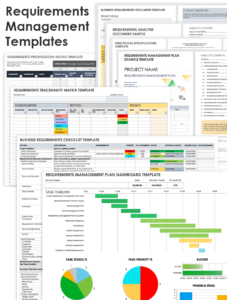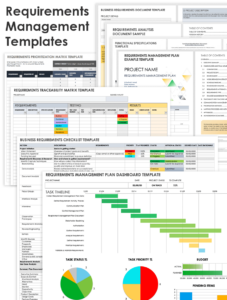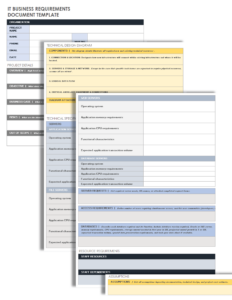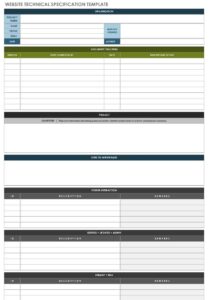In agile software development, requirements are continually evolving as the team learns more about the user’s needs. This can make it difficult to keep track of all the requirements, especially when they are constantly changing. An agile software requirements template can help you organize and track your requirements, ensuring that they are met and that the project stays on track.
An agile software requirements template typically includes the following sections:
User Stories
User stories are a way of describing the requirements from the user’s perspective. They are typically written in the following format: As a [user type], I want to [do something] so that [I can achieve a goal]. User stories should be concise, clear, and easy to understand.
For example, a user story for an e-commerce website might be: As a customer, I want to be able to search for products so that I can find the ones I’m looking for.
User stories are a great way to capture the requirements from the user’s perspective. They are also easy to prioritize and track, making them a valuable tool for agile software development.
Acceptance Criteria
Acceptance criteria are used to define the specific conditions that must be met in order for a requirement to be considered complete. They are typically written in the following format: Given [a certain condition], when [a user does something], then [the system should do something]. Acceptance criteria should be specific, measurable, achievable, relevant, and time-bound.
For example, the acceptance criteria for the user story above might be: Given that I am a customer, when I search for a product, then the system should return a list of products that match my search query.
Acceptance criteria are a great way to ensure that the requirements are met and that the project stays on track. They are also a valuable tool for testing and debugging the software.
Conclusion
An agile software requirements template can help you organize and track your requirements, ensuring that they are met and that the project stays on track. User stories and acceptance criteria are two important components of an agile software requirements template. User stories capture the requirements from the user’s perspective, while acceptance criteria define the specific conditions that must be met in order for a requirement to be considered complete.
By using an agile software requirements template, you can improve the quality of your requirements, reduce the risk of project failure, and increase the likelihood of delivering a successful product.



